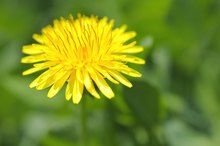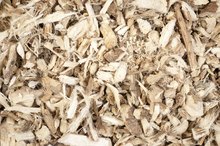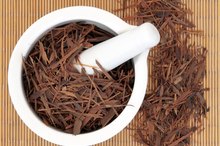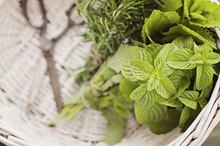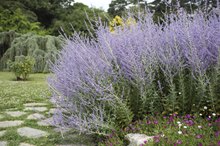Benefits of Marshmallow Root Tea
Marshmallow is an aromatic perennial herb that can grow up to 4 feet high 2. It grows mostly in the northeastern part of North America, as well as Asia and Western Europe in moist soil. According to the University of Maryland Medical Center, marshmallow root has been used as a medicinal herb for 2,000 years by different civilizations, including the Syrians, Chinese and Egyptians 2. It is still used in folk medicine to sooth irritation and relieve inflammation of the gastrointestinal and respiratory tract.
If you are experiencing serious medical symptoms, seek emergency treatment immediately.
Soothing
Marshmallow root contains mucilage, a gel-like substance that becomes slippery when wet 2. According to the University of Maryland Medical Center, mucilage coats both the respiratory and digestive tract, helping soothe irritation and ulcers that may be present. It helps with sore throat and has been used traditionally to treat catarrh and bronchitis. It can also be applied topically to soothe irritation in the skin caused by rashes or skin infections, as well as allergic reactions such as hives.
For a strong tea of the root, make a decoction by adding one-fourth cup of chopped dry root to a medium pot of boiling water. Simmer for a minimum of 10 minutes, and then drain out the root. Drink throughout the day. For external applications, soak a cotton rag in the tea to make a compress that can be applied topically to affected areas of the skin.
- Marshmallow root contains mucilage, a gel-like substance that becomes slippery when wet 2.
- It can also be applied topically to soothe irritation in the skin caused by rashes or skin infections, as well as allergic reactions such as hives.
Laxative
Herbs That Remove Ascites in the Abdomen
Learn More
The mucilage in marshmallow root can promote bowel movements and loosen stools 2. This mild laxative property of the herb is used in folk medicine to treat pain associated with constipation, as well as the discomfort that accompanies diverticulitis and irritable bowel syndrome.
To achieve the laxative effects of marshmallow root, drink a strong decoction followed by two or three glasses of water to help the herb pass through the digestive tract quickly 2. You can also use the tea of marshmallow for an enema if the problem persists 2.
Marshmallow root is a safe herb and can be used for extended periods of times without any harmful side effects 2.
- The mucilage in marshmallow root can promote bowel movements and loosen stools 2.
- Marshmallow root is a safe herb and can be used for extended periods of times without any harmful side effects 2.
Anti-inflammatory
Herbalist David Hoffmann writes in his book “The New Holistic Herbal,” that marshmallow root works as an anti-inflammatory agent for both external and internal ailments 12. Internally, it helps inflammation in the gastrointestinal tract, treating disorders such as inflammation of the mouth, gastritis and colitis. For external uses, it treats boils, sunburns and ulcers, as well as varicose veins. Herbs2000.com explains that you can make a marshmallow root tea by adding 2 teaspoons of dry root to a cup of boiling water, and let it steep for five minutes 2. Drink slowly as often as needed to achieve desired results.
Related Articles
References
- "The New Holistic Herbal"; David Hoffman; 1995
- Herbs 2000: Marshmallow
Writer Bio
Ana Cassis began writing professionally in 1995. She has been published in the magazines "Cancunissimo," "Mesa Visions" and in online heath publications. Cassis is a nutrition counselor and herbalist with experience in fitness, nutrition and yoga. She holds an Associate of Arts in architecture from San Diego Mesa College.
